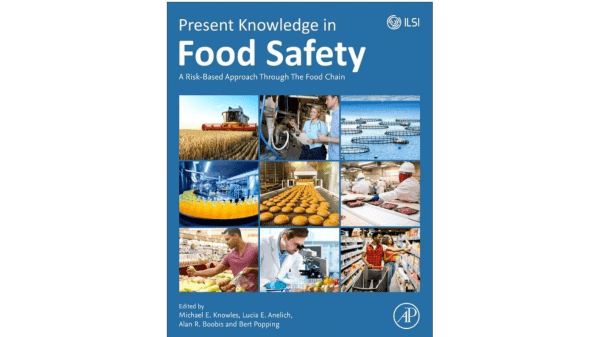This is the first of a two-part article.
I am totally unqualified to review this book.
With 72 chapters in over 1150 pages, it is an awe-inspiring work. It weighs 8 pounds, according to my bathroom scale. It’s also expensive, with a list price of $170.


It contains such a vast amount of technical material that even a specialist would probably be able to critique only two or three chapters in detail.
Nonetheless, it is an important work, and I believe that everyone involved in food safety should be familiar with it.
This work makes every effort to be comprehensive. As a result, only a comparatively small part of it relates directly to fresh produce, but the whole volume contains insights in various areas that are of direct value.
I am only able to give a few snippets here that I think relevant and interesting.
For example, there have been many lawsuits about Roundup—and specifically, whether it is carcinogenic. Is it?
It’s complicated, according to the chapter entitled “Agrochemicals in the Food Chain”:
“In 2017 the European Chemical Agency (ECHA) concluded that glyphosate was toxic to eyes and aquatic life but that the pure compound was not a carcinogen.”
But that’s glyphosate. It’s the active ingredient in Roundup, but it is not Roundup. Glyphosate “is normally formulated with a range of surfactants and these mixtures appear to be more toxic than the parent chemical itself, particularly the ‘Roundup’ formulation.”
The toxicological studies on glyphosate and its mixtures “have all been criticized for failures in study design and inadequate interpretation of the results.”
So it’s not clear at this point whether Roundup is carcinogenic or not.
Agrichemicals are tested with a rigorous and costly process. “The toxicity testing program takes a minimum of 4 years to complete, uses several thousand laboratory animals, and costs millions of dollars” (569).
These tests usually focus on the material itself, so we could wonder whether many materials used together could combine in a way that makes them together worse than they are on their own.
The answer is, of course, complicated, but the book devotes a great deal of attention to it—known in the industry as “the cocktail effect.”
Chapter 62, “Consumer Attitudes about the Use of New Technologies in Agrifood Industries” has some strong words about advocacy groups and public perceptions. The chapter quotes H. Cardello in a 2016 issue of Forbes:
“Outside influencers, both well-meaning experts and articulate novices, are scrambling corporate communications and often spreading their own uninformed interpretations about food ingredients, working conditions, fair trade, and other concerns. Using social media to amplify and spread those messages quickly, activists, lawmakers, and others have captured the public’s attention, even when the charges are reckless” (968).
The chapter singles out the Center for Science in the Public Interest by name.
These observations say something about public perceptions of food safety that is often overlooked.
Many—including those in the media—assume that advocacy groups are pure-minded, disinterested sources of information, whereas industry sources are presumed to be corrupt and contemptuous of the public interest.
If the produce industry wants to counteract misinformation from advocacy groups, it could start by underscoring the fact that these groups have an agenda of their own, and that this agenda often motivates them to make false and needlessly alarming claims.
It is not true to say that one side of this argument presents fair and impartial information while the other does not.



